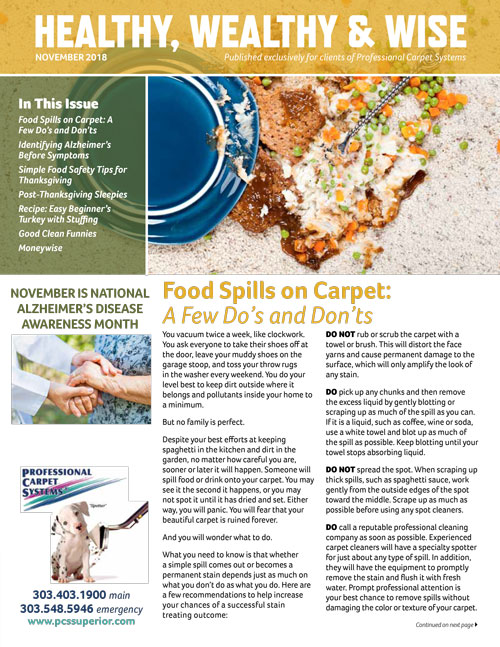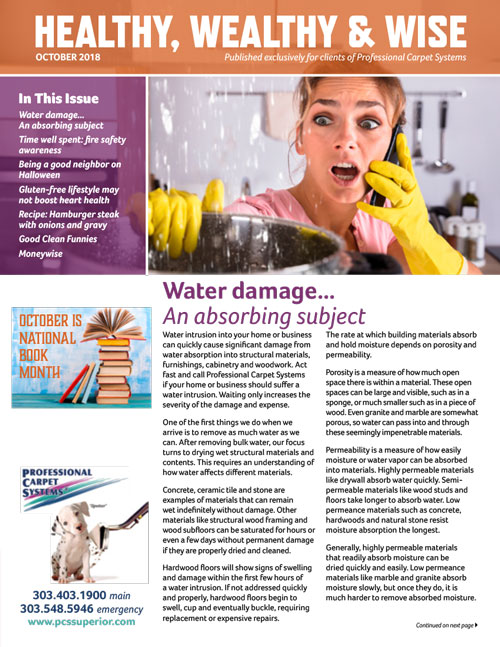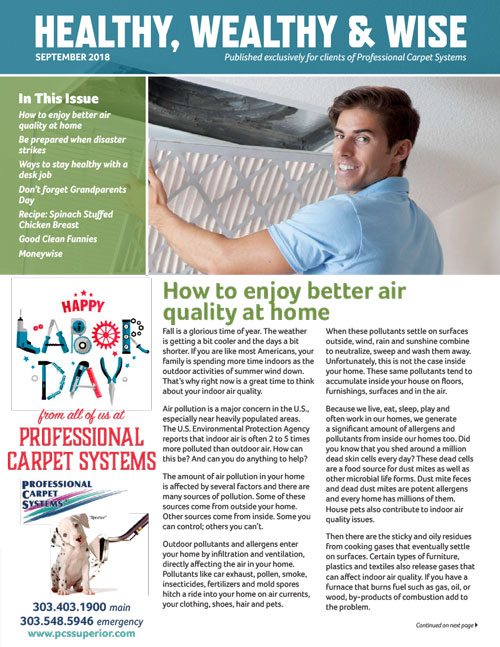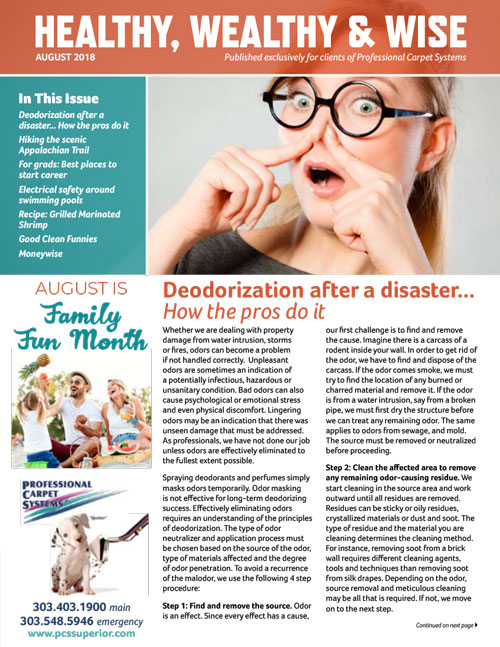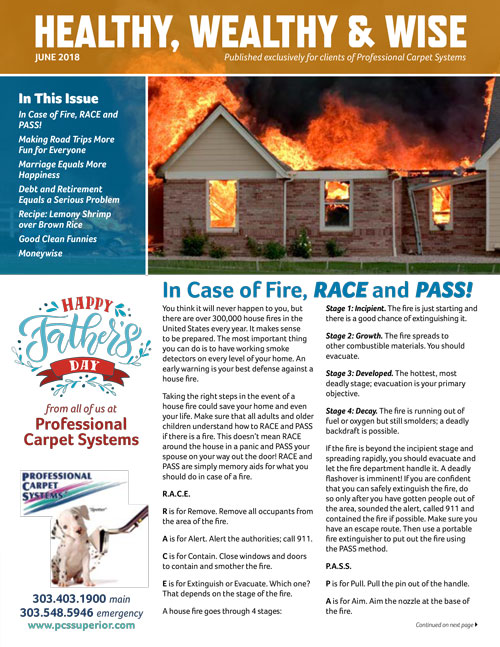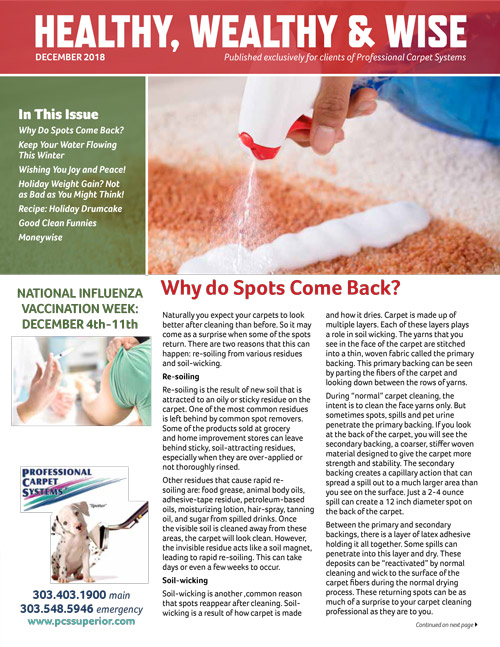
Click Here to See the Full Newsletter
Why do Spots Come Back?
Naturally, you expect your carpets to look better after cleaning than before. So it may come as a surprise when some of the spots return. There are two reasons that this can happen: re-soiling from various residues and soil-wicking.
Re-soiling
Re-soiling is the result of new soil that is attracted to an oily or sticky residue on the carpet. One of the most common residues is left behind by common spot removers. Some of the products sold at grocery and home improvement stores can leave behind sticky, soil-attracting residues, especially when they are over-applied or not thoroughly rinsed.
Other residues that cause rapid resoiling are food grease, animal body oils, adhesive-tape residue, petroleum-based oils, moisturizing lotion, hair-spray, tanning oil, and sugar from spilled drinks. Once the visible soil is cleaned away from these areas, the carpet will look clean. However, the invisible residue acts as a soil magnet, leading to rapid re-soiling. This can take days or even a few weeks to occur.
Soil-wicking
Soil-wicking is another, common reason that spots reappear after cleaning.
Soilwicking is a result of how carpet is made and how it dries. Carpet is made up of multiple layers. Each of these layers plays a role in soil wicking. The yarns that you see in the face of the carpet are stitched into a thin, woven fabric called the primary backing. This primary backing can be seen by parting the fibers of the carpet and looking down between the rows of yarns.
During “normal” carpet cleaning, the intent is to clean the face yarns only. But sometimes spots, spills, and pet urine penetrate the primary backing. If you look at the back of the carpet, you will see the secondary backing, a coarser, stiffer woven material designed to give the carpet more strength and stability. The secondary backing creates a capillary action that can spread a spill out to a much larger area than you see on the surface. Just a 2-4 ounce spill can create a 12-inch diameter spot on the back of the carpet.
Between the primary and secondary backings, there is a layer of latex adhesive holding it all together. Some spills can penetrate into this layer and dry. These deposits can be “reactivated” by normal cleaning and wick to the surface of the carpet fibers during the normal drying process. These returning spots can be as much of a surprise to your carpet cleaning professional as they are to you.
The reason the spots return has to do with the mechanics of capillary action. As carpet dries, water evaporates from the tips of the carpet yarns, drawing some of the remaining moisture behind it. If there is any kind of soil or spill at the base of the yarns or in the backing, it too can be drawn up to the yarn tips. Unfortunately, while water readily evaporates, soils do not. So the spots that were hidden in the backing system are now at the top of the carpet where they can create a visibly noticeable spot. Correcting recurring spots may simply require a thorough rinse. Other times, specialized cleaning agents and more intensive cleaning techniques are needed.
While we do our best to prevent recurring spots, it does happen sometimes. If you ever see a spot come back after Professional Carpet Systems cleans your carpet, please call us as soon as possible so we can return and properly address the situation. Once we find the cause, we’ll use special techniques to correct it and leave your carpet spotless again.

